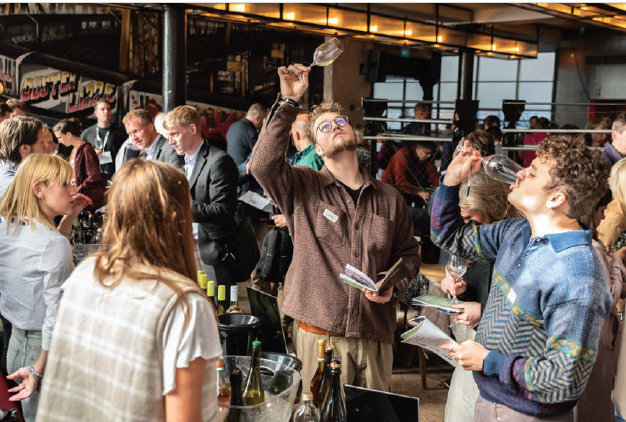Navarra to launch Spain’s most expensive wine ‘by far’
Navarra will soon be the source of Spain’s priciest wine when Bodega Otazu launches a Cabernet blend costing €2,000 a bottle – and there’s already demand.
The wine, which is due to hit the market in September this year, is called Vitral, and is made with Cabernet Sauvignon, Tempranillo and Merlot grapes grown on the Bodega Otazu estate near Pamplona, in Spain’s DO Navarra.
Speaking to the drinks business at the winery last week, Guillermo Penso, who is the director of Otazu – and son of the owner and founder of the bodega – said that he was creating “the most expensive wine in Spain by far.”
Confirming that the wine would sell for €2,000, he said that just 688 bottles were being made using grapes from the 2013 vintage.
Vitral comes with a label designed by Venezuelan artist Carlos Cruz-Diez (pictured below), who has also created a triangular wooden box for the new product.
Although Penso’s father was originally from Pamplona, Guillermo was brought up in Venezuala where his father runs a business making iron t-bars for construction, and hence the selection of a Venezualan artist for Vitral’s design.
Partner Content
Guillermo also told db that despite the high price, the wine is already almost sold-out, with Otazu’s network of private customers placing advance orders, particularly those from China and Venezula, two of Otazu’s largest export markets.
Otazu – which was bought for investment purposes in 1989 by Guillermo’s father as a 250 hectare farm without vines – is now home to one of Spain’s 15 Vinos de Pagos, and already produces one of Navarra’s most expensive wines with its ‘Altar’ Cabernet Sauvignon, which sells for almost €40 in Spain.
However, Vital, at €2,000, is more than double the price of Spain’s most expensive labels, which include Pingus and Vega Sicilia Unico from Ribera de Duero, L’Ermita from Priorat, and La Faraona from Bierzo.





Utterly ridiculous – for those with more money than sense.
Madness and pretentious. The reputation of Vega Sicilia, Pingus Palaciois Priorat and Bierzo has not been built overnight. It is not because you only make a few hundred bottles that you can sell it for 2000 Euros. And Navarra is not Ribera del Duero, Priorat or even Bierzo.
Since I actually been to the project and know the winemaking team, I differ with both comments. Navarra is not Ribera or Priorate, in the same way Otazu is not Navarra. The wine is made under their own D.O.P. Pago de Otazu denomination, single state, 900 kg/ha yields, manual harvest, manual selection, microvinifications, etc. During the past 5 years the property has spent millions hiring a dream team of enologist and investing in the vineyard in order to maximise the terroir expression (their closest vineyard is 12 km away on a straight line south). This wine is the results of all those years of investment and work. Furthermore, having Carlos Cruz- Diez, founder of cinetism and artist whose pieces can sell for millions of dollars, sign off on this projects, means his trust that his brand is safeguarded by Otazu.
Ultimately, it is the taste that matters most. Not the money investment or utter care yu do in th vineyard. All these periferals should not determine the value of the wine to a discerning consumer. I do not doubt that label seekers have other considerations in their mind.
I got married at Otazu, and really proud of them hitting the ‘fine’ wine market, especially as they came from such from humble beginnings. I am saving a Pago Otazu for a special day and having drunk their wine at our wedding, I can’t wait to open it.
Why shouldn’t they enjoy the fruits (grapes?) of their labour?